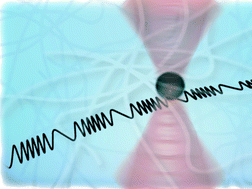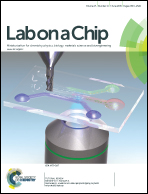Frequency modulated microrheology†
Abstract
Coupling analog frequency modulation (FM) to the driving stimulus in active microrheology measurements conducted with optical tweezers effectively parallelizes numerous single-frequency experiments. Consequently, frequency modulated microrheology (FMMR) can efficiently characterize the dynamic stress response of complex fluids over several frequency decades in a single experiment. The time required to complete an FMMR measurement scales with the lowest frequency probed, improving throughput over the serial frequency sweep approach. The ease of implementation, straight-forward data analysis and rapidity of FMMR offer particular utility toward applications such as characterization of non-equilibrium materials, automated microrheology instrumentation, high-throughput screening of biomaterials and (bio) pharmaceutical formulations, and in situ monitoring of chemical and biochemical reaction processes.


 Please wait while we load your content...
Please wait while we load your content...